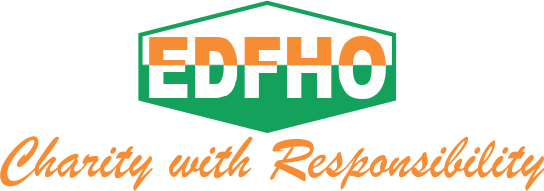Enhancing The Community Resources To Promote Sustainable Hiv/Aids Prevention Among In And Out Of School Youths In Yagba East And Kogi Local Government Area Of Kogi State.
It is now widely recognized that the greatest health challenge of this age is that posed by infection with Human Immune-deficiency Virus (HIV). Since the first official case of AIDS in Nigeria was reported in 1986, the epidemic has expanded rapidly. The adult prevalence rate has increased from 1.8% in 1991 to 5.8% in 2001 and 4.1% in 2010.
Estimates using the 2003 HIV/Syphilis zero-prevalence sentinel survey among women attending antenatal clinic indicates that between 3.2 and 3.8 million Nigeria aged 16-49 years are infected with the virus. The epidemic in Nigeria has extended beyond the commonly classified high-risk groups and is now common in the general population. HIV/AIDS is ravaging decades of development gains, increasing poverty, undermining the very foundation of progress and security.
According to 2010 sentinel survey, Kogi state is with an HIV prevalence rate of 5.8%, from a population 3.2millon making it the fifth highest in the north central zone of Nigeria. Globally, HIV epidemic has stabilized, although with unacceptably high levels of new HIV infection and AIDS death, there were estimated 3.1 million people living with HIV at the end of 2010 in Nigeria. Kogi state has an ANC prevalence rate of 5.8% this is an increase from 5.1% of previous sentinel survey (2008). Though specific demographics of this data is not available for it to be disaggregated but from the local data, it appears that Kogi State has an advance mixed epidemic with transmission dynamics dependents on both key most at Risk population (MARPS) and general the population. In the state, empirical evidence revealed a high level of sexual activity in the society which shows that 35% of male reported have had multiple sexual partners in the past years compared to 37% of female population (DHS 2008). The percentage of men and women in the general population who have heard of HIV/AIDS is high at 96% and 88% respectively, comprehensive knowledge about HIV prevention method is still quite low (DHS 2008) and only 52% and 84% of men and women respectively know that using condom in every sexual encounter can reduce the risk of getting HIV. The proportion of youths and young adult reporting high risk of sexual intercourse is moderately high (females 37% and male 35%) and a 2008 study found that majority of the youths in Kogi State engaged in high - risk sex (HSS2010, DHS2008). In a KAP study conducted by C-Change (2010) revealed that 35.7% of Youths interviewed had their first sexual experience before age 14 and this was observed to be highest among the in-school youth where about 75% of the respondents reported to have had their first sexual experience before age 14. Also about 40% claimed to have sex with someone older than them i.e. 66.7% for female and 33.3% male among tertiary institutions. The State condom knowledge is low resulting into the inadequate and inconsistency of usage among sexually active young adult. In the same KAP study, 41% of youths interviewed claimed to have used condom during their first sexual experience; 51.2% reported using it during their last sex act while 45% admitted they didnt use condom consistently in the last one year.
Looking at the present state prevalence, the highest prevalence fell within the aged 15-35 years which formed the age brackets of youths in secondary schools and reproductive age usually regarded as general population or OSY.
Kogi State is noted for its sizeable number of youths in and out of schools. However, there is a high percentage of awareness of HIV/AIDS but accurate knowledge on how to prevent infection is limited. Attitudes towards risk of infection are also rather limited. These young people and general population are ill informed about the basic facts of HIV/AIDS, lack knowledge and skill to protect themselves and couples with poor community response to HIV/AIDS prevention. This project targeted youths in secondary schools and out of school youths/ general population aged 15-60 years in the intervention schools and communities.
GOAL AND OBJECTIVES
Reduce the spread and mitigate the impact of HIV/AIDS among In school (secondary) and Out of school youth in Adavi, Kabba-Bunu, Kogi and Yagba East Local Government Areas of Kogi State through HIV/AIDS information and capacity building that promotes behaviour change and HIV prevention within a period of 24 months.
Specific objectives
- To increase community collaboration and participation among stakeholders through advocacy and sensitization to create an enabling environment for community response to HIV/AIDS prevention in Adavi, Kabba-Bunu, Kogi and Yagba East LGAs.
- To build and strengthen the capacity of 288 ISY – secondary and 147 out of school youths as peer educators to provide HIV/AIDS and sexual reproductive health issues.
- To improve knowledge amongst 13,050 ISY secondary and out of school youths on life skills and behavioural change messages to make informed decisions.
- To increase access to existing HIV prevention services like STIs, condom, HCT, among out of School youths by building linkages for referral between participating youth groups and health services facilities.
- To increase access to existing HIV prevention services like STIs, condom, HCT, among out of School youths by building linkages for referral between participating youth groups and health services facilities.
Copyright ©2020 EDFHO Nigeria. All Rights Reserved


